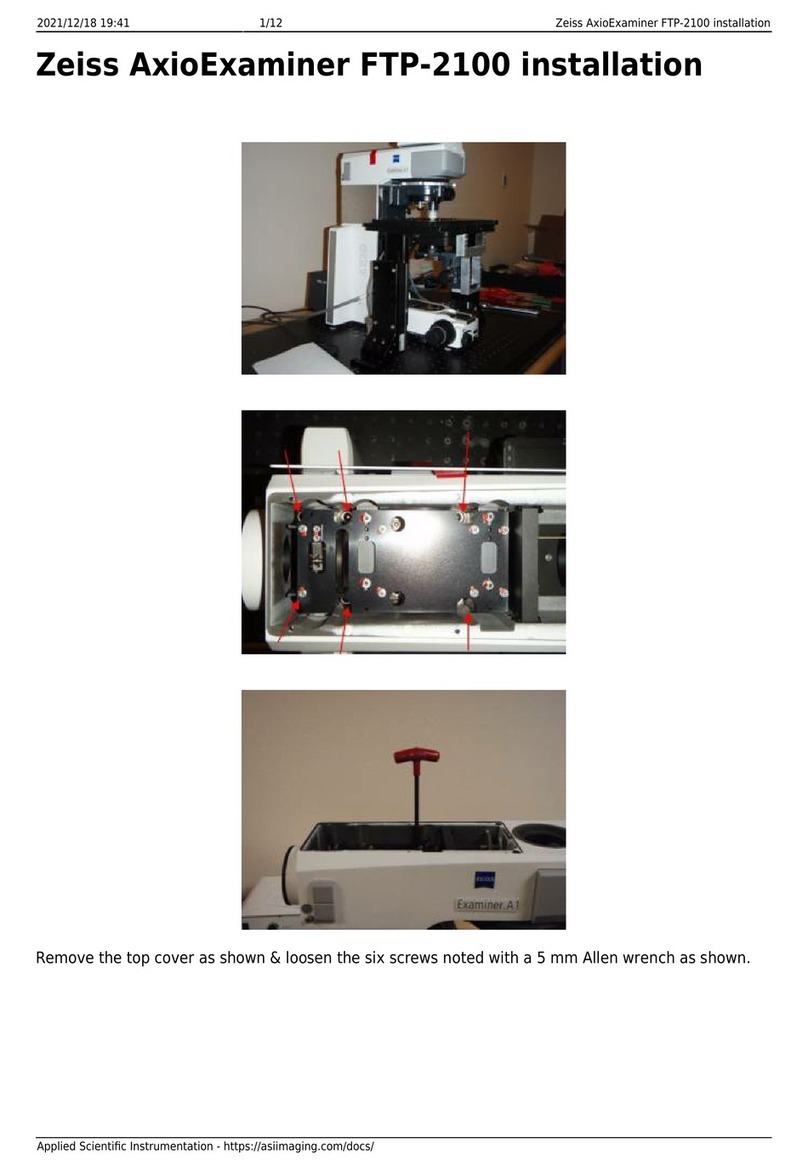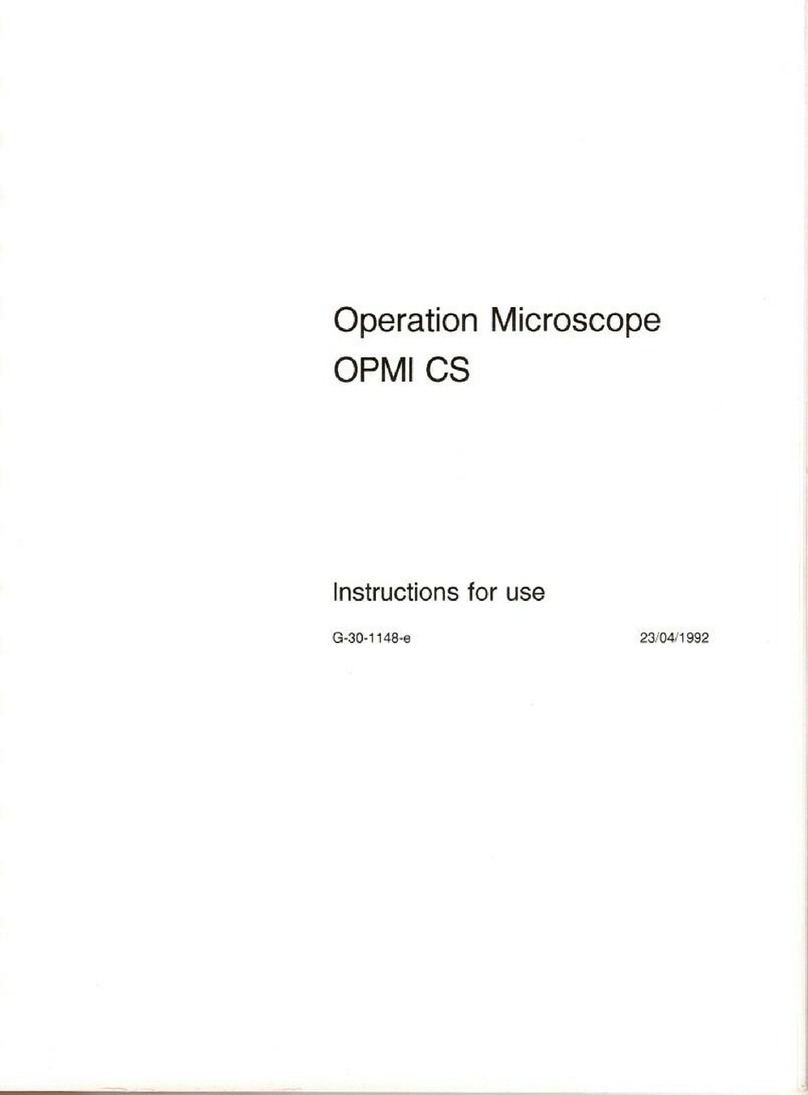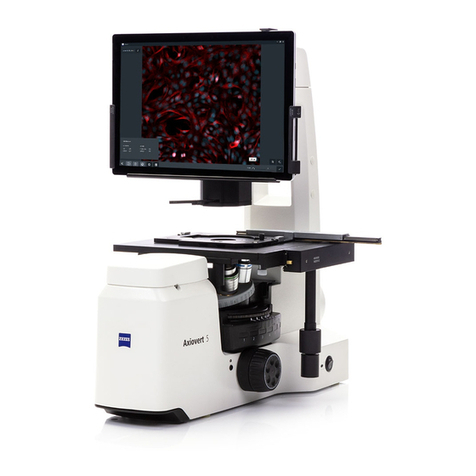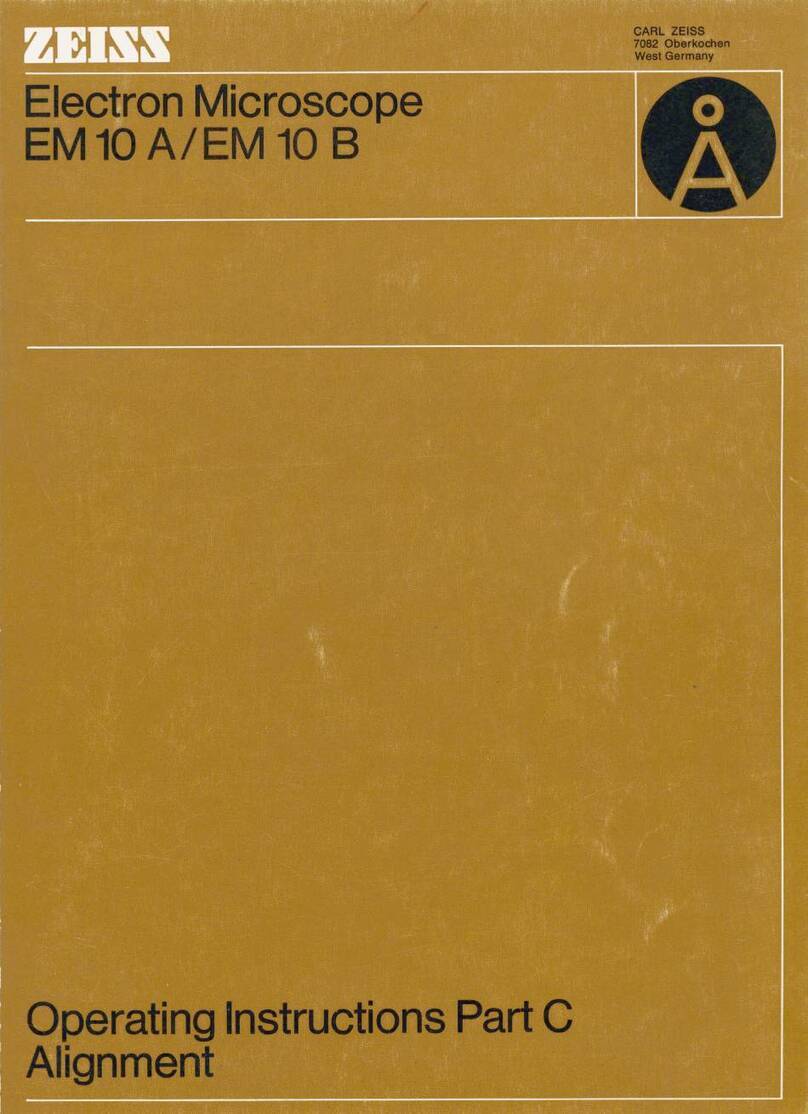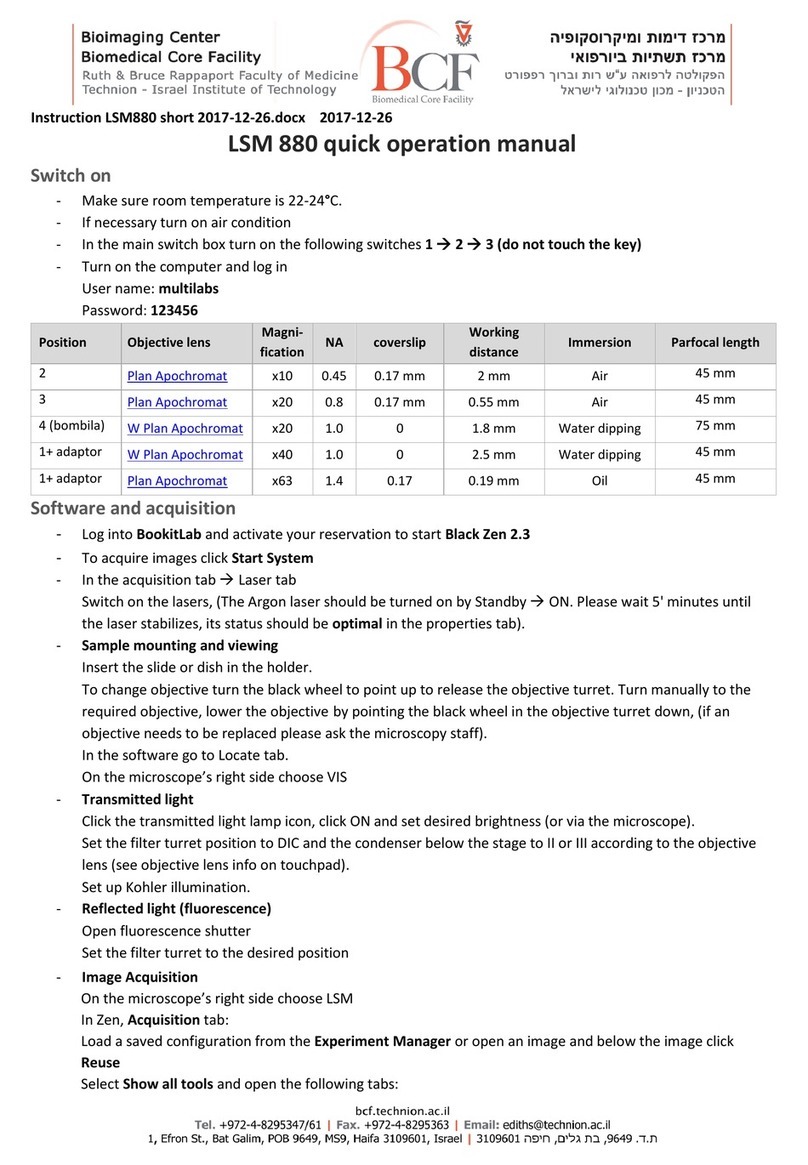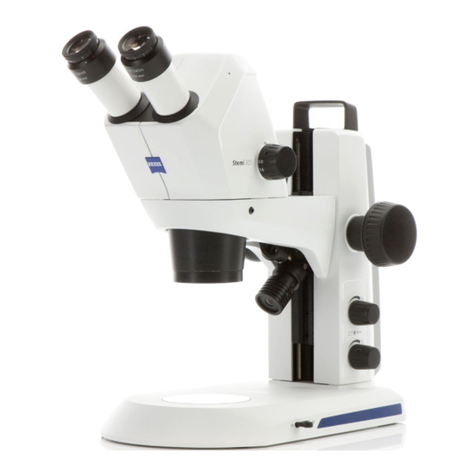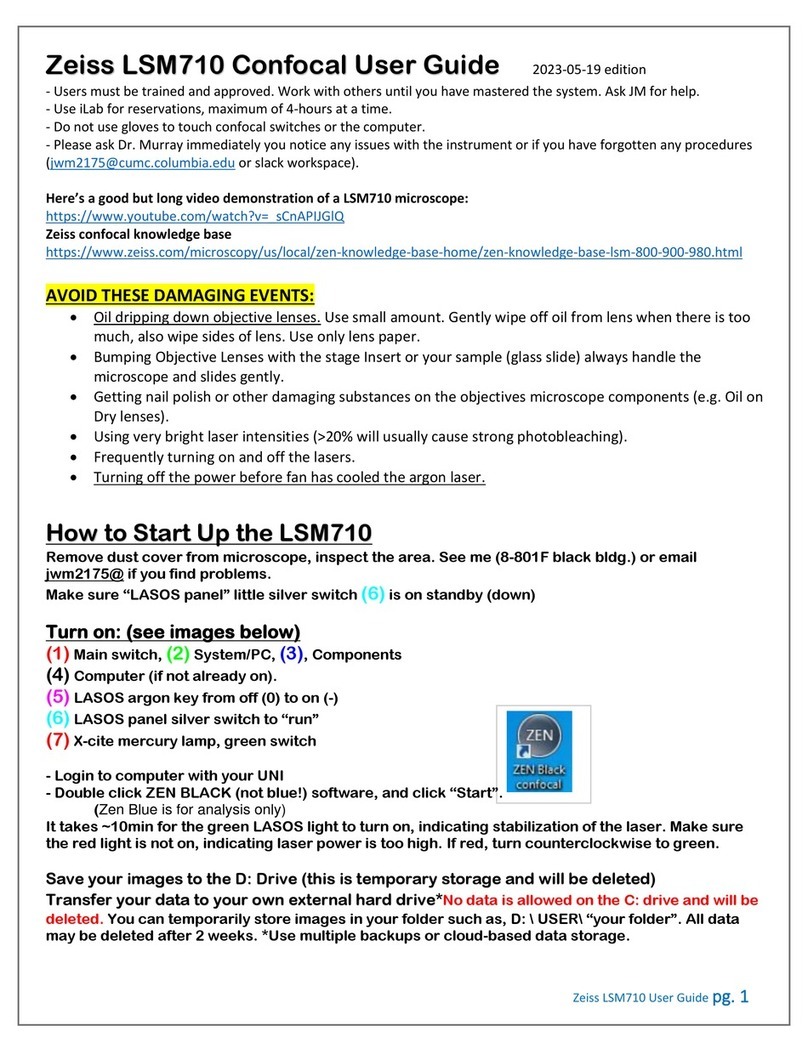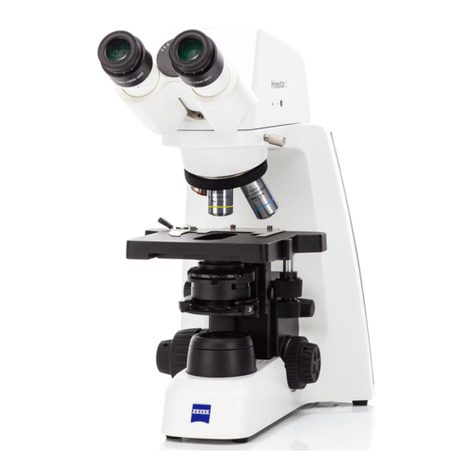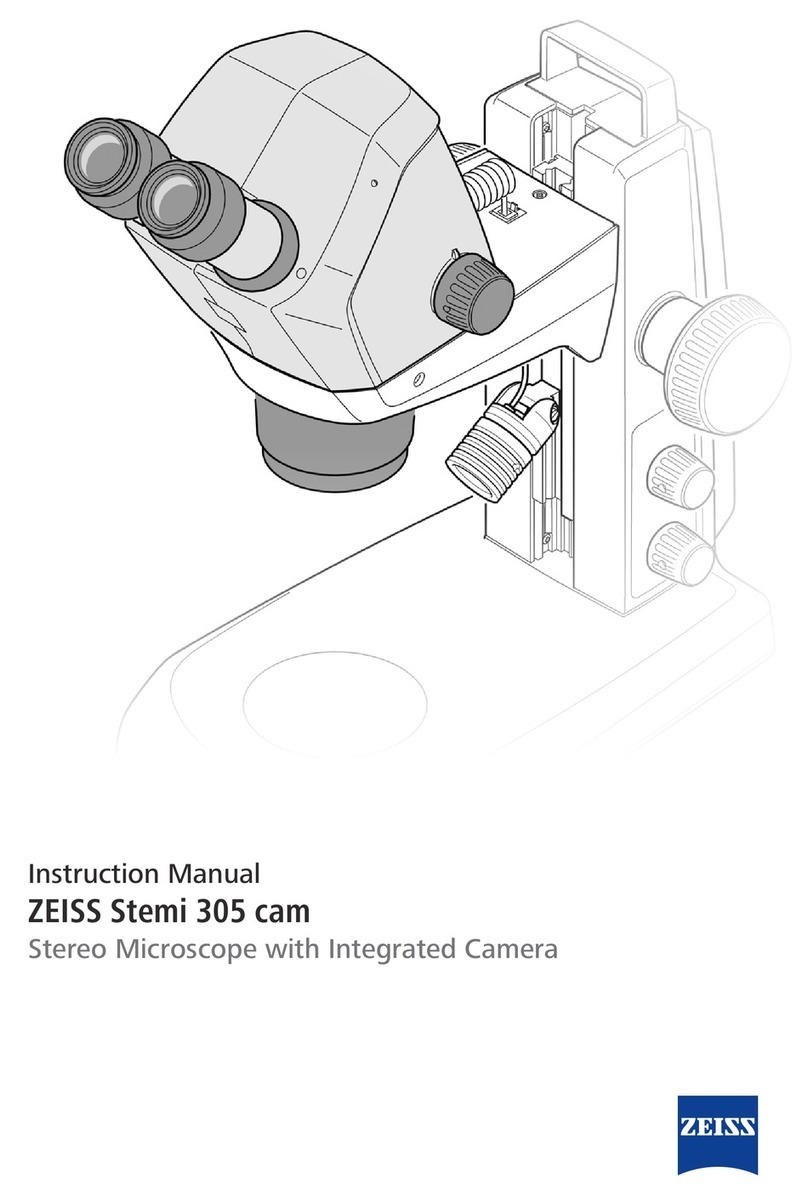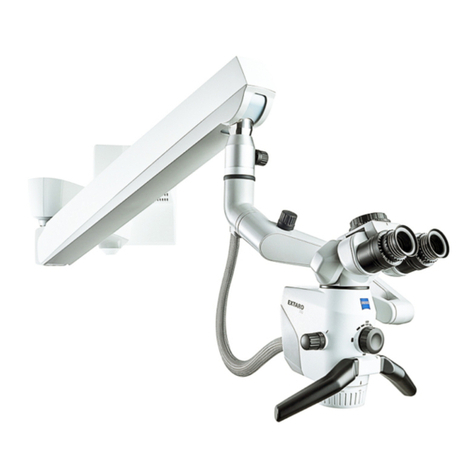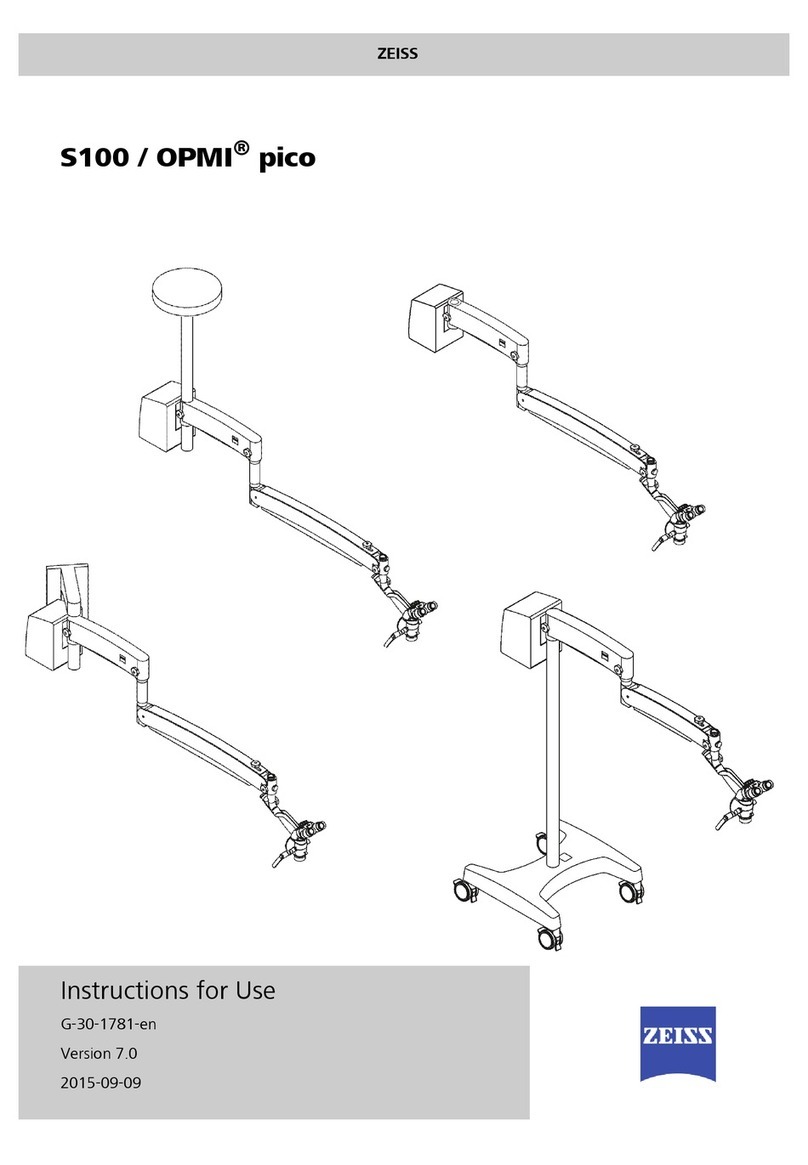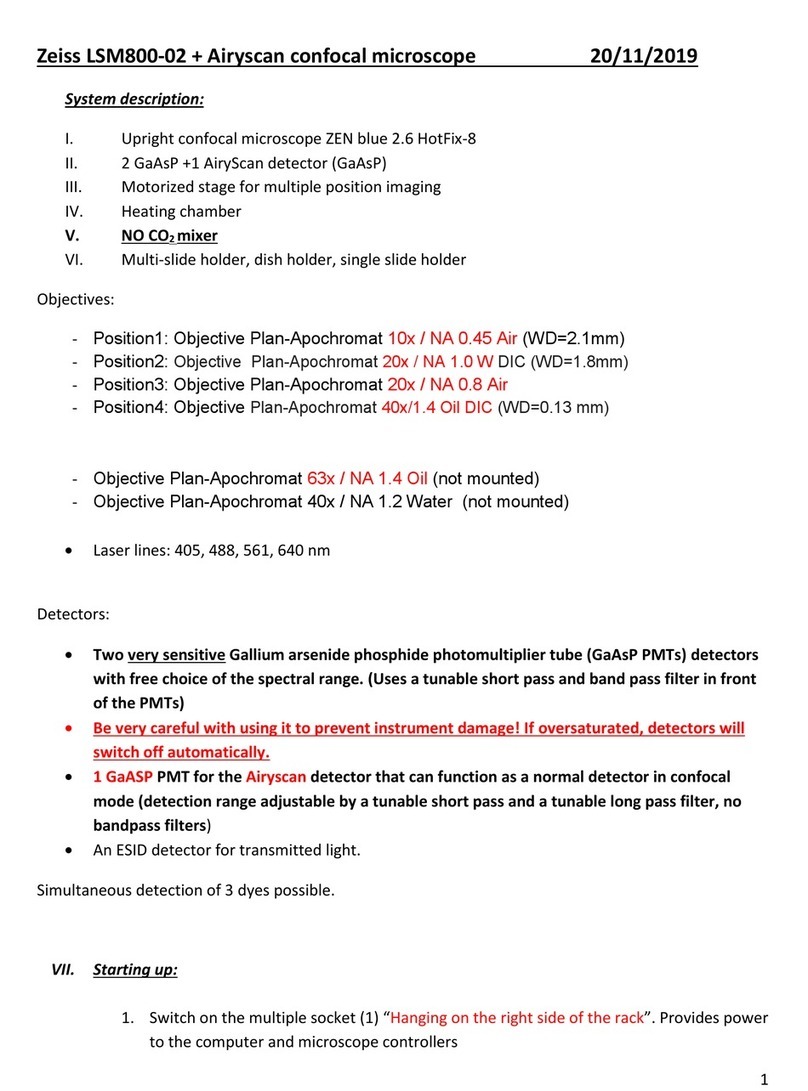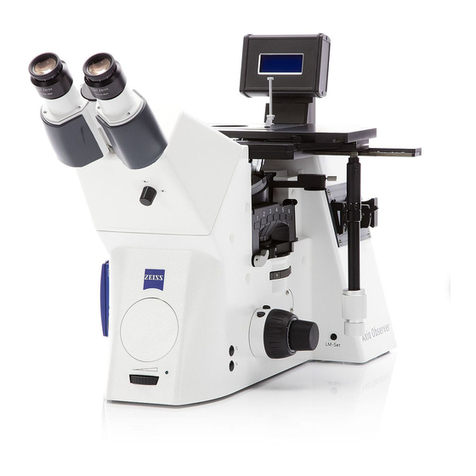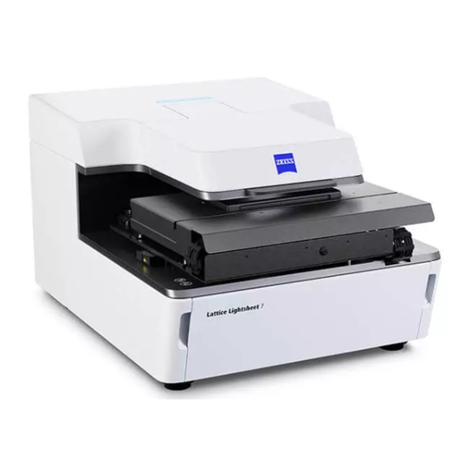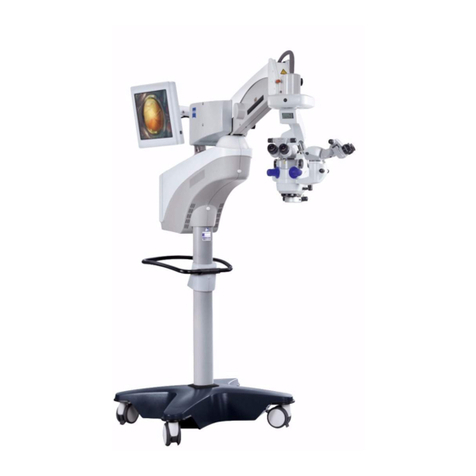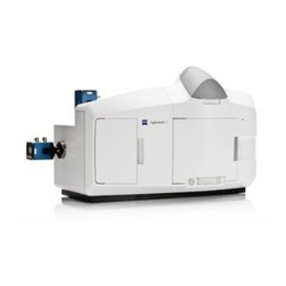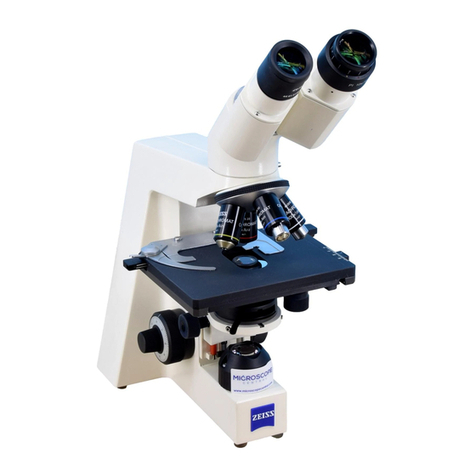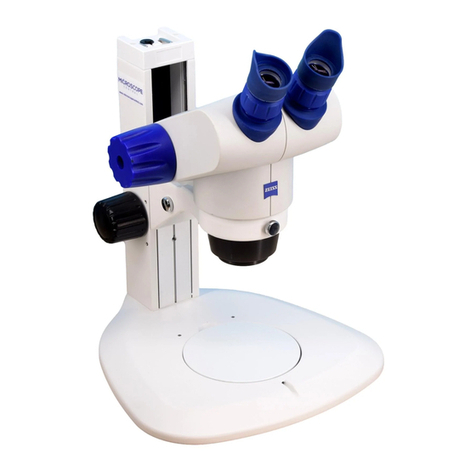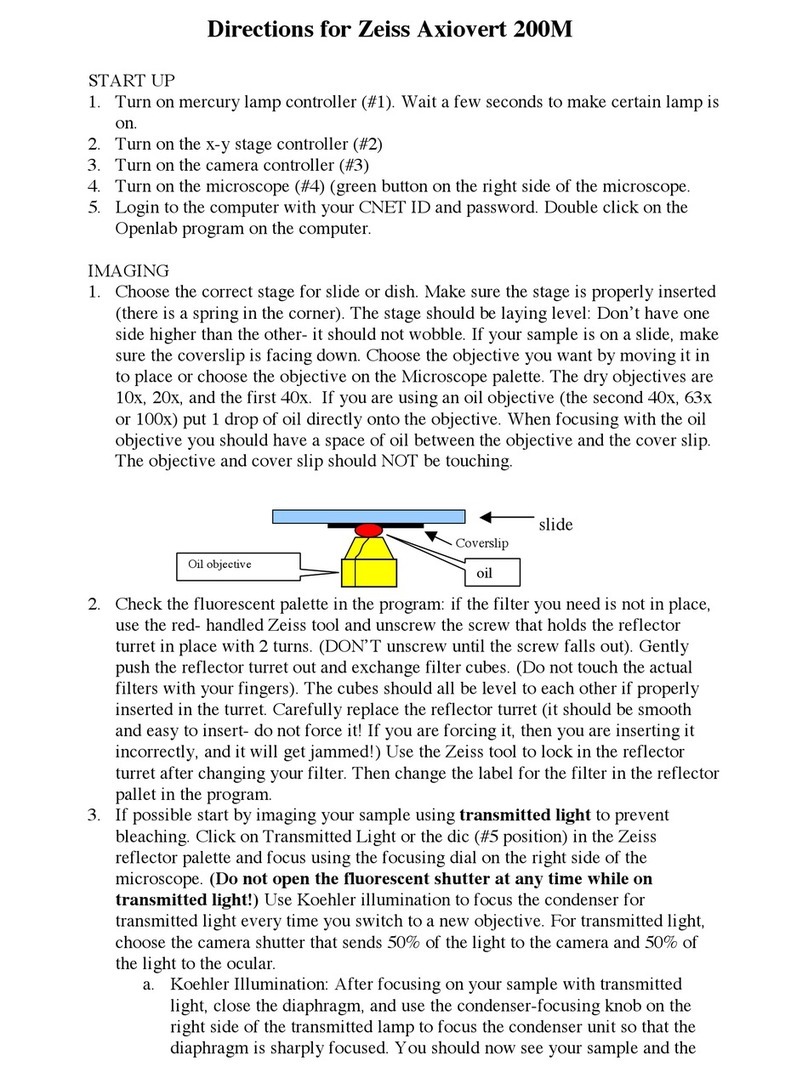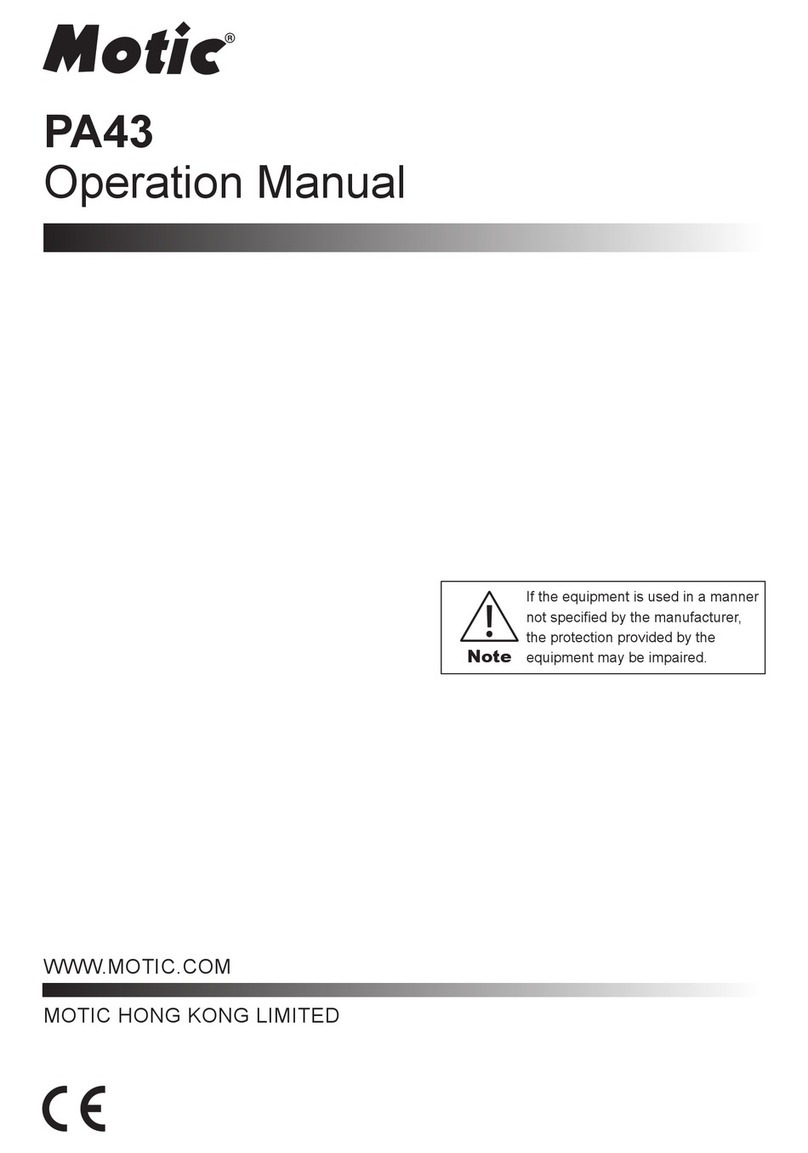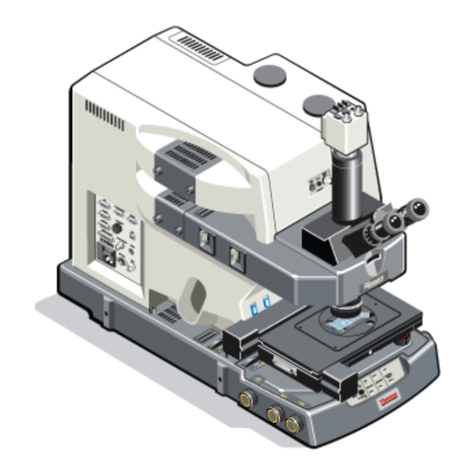
Cell Observer SD CONTENTS Carl Zeiss
M60-2-0021 e 01/2009 423638-7044-001 3
CONTENTS
Page
1Notes on Instrument Safety ..............................................................................................5
1.1 General Notes .......................................................................................................................5
1.2 Safety Instructions.................................................................................................................7
1.2.1 Notes on Laser Radiation.......................................................................................................7
1.2.2 Installation Instructions..........................................................................................................8
1.2.3 Service Interfaces ................................................................................................................11
1.2.4 Warning and Information Labels on the Instrument.............................................................13
1.3 Notes on Warranty..............................................................................................................19
2Instrument Description ....................................................................................................20
2.1 Intended Use.......................................................................................................................20
2.2 Functional Principle .............................................................................................................21
2.3 Instrument Description and Main Features...........................................................................22
2.3.1 Cell Observer SD .................................................................................................................23
2.3.2 CSU-X1 Control Box............................................................................................................25
2.3.3 Multi Laser Module .............................................................................................................26
2.3.4 Signal Distribution Box SVB 1 ..............................................................................................27
2.3.5 Filter Wheel.........................................................................................................................27
2.3.6 Basic Laser Safety Kit...........................................................................................................28
2.3.7 Safety Kit for Customer-Provided Laser Module...................................................................29
2.4 System Overview Cell Observer SD ......................................................................................30
2.5 Suitability of Objectives for the Use .....................................................................................31
2.6 Suitability of Optical Fibers for Use in Cell Observer SD........................................................31
2.7 Technical Data ....................................................................................................................32
3Start-Up.............................................................................................................................37
3.1 Installation Requirements ....................................................................................................37
3.1.1 Space Requirements............................................................................................................37
3.1.2 Power Requirements ...........................................................................................................38
3.1.3 Environmental Requirements...............................................................................................39
3.2 Requirements on Microscope Stand ....................................................................................40
3.3 Basic Microscope Settings ...................................................................................................41
3.4 Height Setting of CSU-X1 Spinning Disc Unit.......................................................................41
3.5 Mounting the Camera.........................................................................................................42
3.6 Connection of Spinning Disc Unit........................................................................................43
3.6.1 Connecting the CSU-X1M 1800/ 1800 Dual Cam Spinning Disc Unit...................................43
3.6.2 Connecting the CSU-X1M 5000/5000 Dual Cam or CSU-X1A 5000 Spinning Disc Unit .......43
3.6.3 Connecting the Filter Wheel................................................................................................44
3.7 Connecting the CSU-X1 Control Box...................................................................................44
